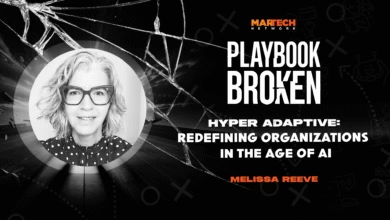AI Tools for Marketers: A Guide to Vibe Coding

▼ Summary
– AI-powered tools like Cursor have revolutionized web development, enabling single marketers to build websites in days instead of weeks, a process known as vibe coding.
– Vibe coding allows creators to use natural language to guide AI in technical execution, shifting focus from technical skills to strategic communication and project management.
– Seven strategies are essential for marketers using AI tools: building a training library, selecting the right AI model, using step-by-step checklists, establishing clear prompt boundaries, reviewing changes, creating .MDC rule files, and embracing continuous learning.
– Vibe coding offers a significant competitive advantage by allowing rapid prototyping, testing, and deployment of digital assets, changing who can create digital experiences and how quickly.
– Mastering AI collaboration positions professionals at the forefront of digital creation, emphasizing the importance of strategic direction over passive use of AI tools.
Building websites used to feel like climbing a mountain without gear – until AI-powered tools like Cursor transformed the process entirely. What once required teams of specialists and weeks of work can now be accomplished by a single marketer in days. This seismic shift in web development, known as vibe coding, represents the future of digital creation.
My first experience with WordPress in college felt like scaling Everest, manually crafting every line of code. Today, AI-assisted development tools let anyone build professional landing pages through simple prompts. Recently, I created twelve fully functional pages in just two days using Cursor’s intuitive interface. The key difference? Instead of wrestling with syntax, I focused on guiding the AI through strategic instructions.
Vibe coding fundamentally changes the development process by allowing creators to describe what they want in natural language while the AI handles the technical execution. This approach doesn’t eliminate the need for technical understanding – rather, it shifts the focus to clear communication and project management. Think of it as directing a talented but overeager junior developer who needs precise guidance to deliver optimal results.
Seven essential strategies emerged from my experience that can help marketers harness this powerful technology:
1. Build a comprehensive training library before starting any project. This includes:
- Template HTML/CSS files
- Brand style guides with color codes
- Image assets with consistent naming conventions
- Content spreadsheets for dynamic elements
- Writing style personas for consistent tone
2. Select your AI model strategically based on task requirements. Different models excel at specific functions:
- o4-mini for project planning
- GPT-4.1 for original code generation
- Claude 3.7 Sonnet for complex edits
- Gemini 2.5 Pro as an all-around performer
3. Break projects into step-by-step checklists that the AI can follow systematically. This prevents scope creep and ensures quality control at each stage. Have the AI:
- Outline the complete workflow
- Identify dependencies
- Validate its own work before proceeding
4. Establish clear boundaries with every prompt to maintain focus. Phrases like:
- “Proceed carefully and stay on task”
- “Do not make changes beyond these instructions”
- “Explain your reasoning for these modifications”
5. Review all changes meticulously before accepting them. Pay special attention to:
- Large code deletions (highlighted in red)
- Unexpected structural changes
- Deviations from brand guidelines
6. Create .MDC rule files to standardize processes across projects. These memory configurations help the AI:
- Remember your preferences
- Avoid repeating mistakes
- Maintain consistency in future work
7. Embrace continuous learning as the technology evolves. The most successful users:
- Experiment with new features
- Adapt workflows as models improve
- Share knowledge with other practitioners
The landscape of web development is undergoing its most significant transformation since the advent of visual editors. Vibe coding represents more than just a productivity boost – it fundamentally changes who can create digital experiences and how quickly they can bring ideas to life. Marketers who master these tools gain a substantial competitive advantage, able to prototype, test, and deploy digital assets at unprecedented speed.
While the learning curve exists, the payoff justifies the investment. Those who develop these skills now position themselves at the forefront of a movement that’s reshaping digital creation. The future belongs to professionals who can effectively collaborate with AI – not as passive users, but as strategic directors guiding intelligent tools toward business objectives.
(Source: Search Engine Land)






